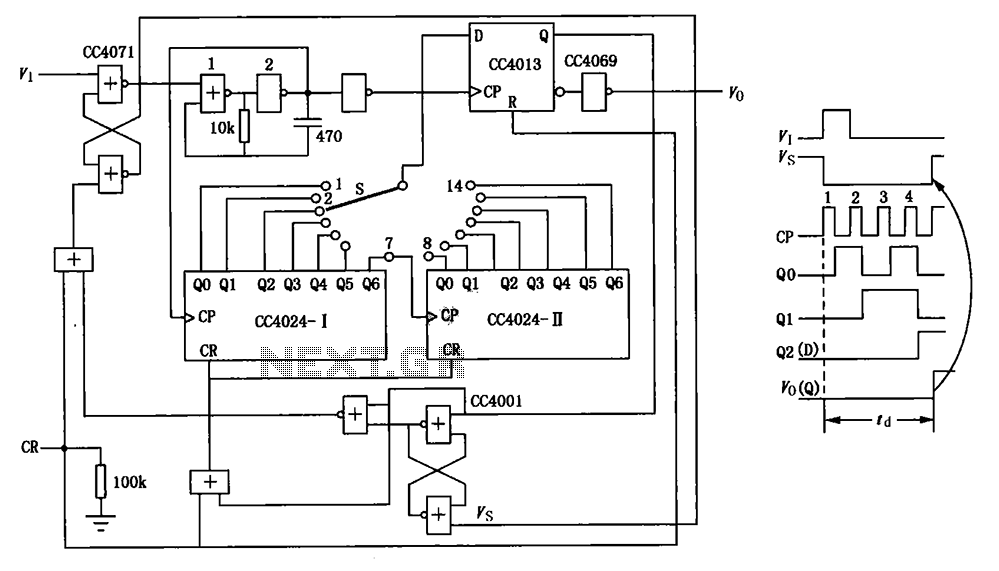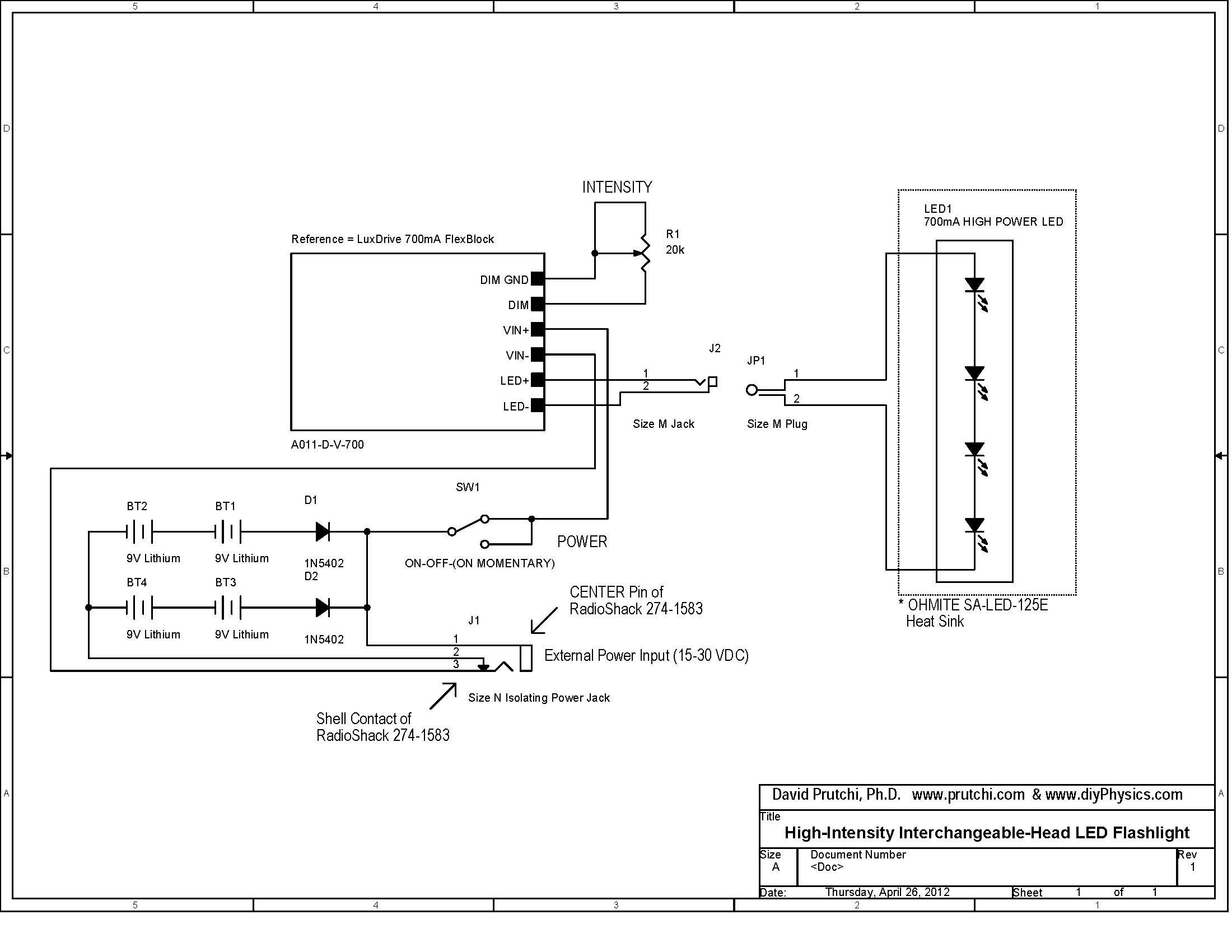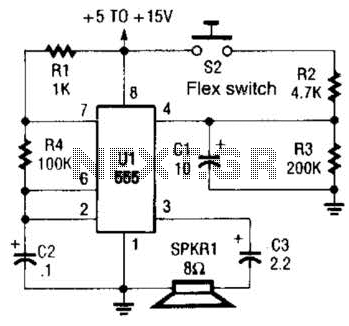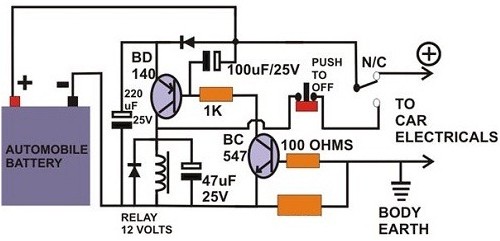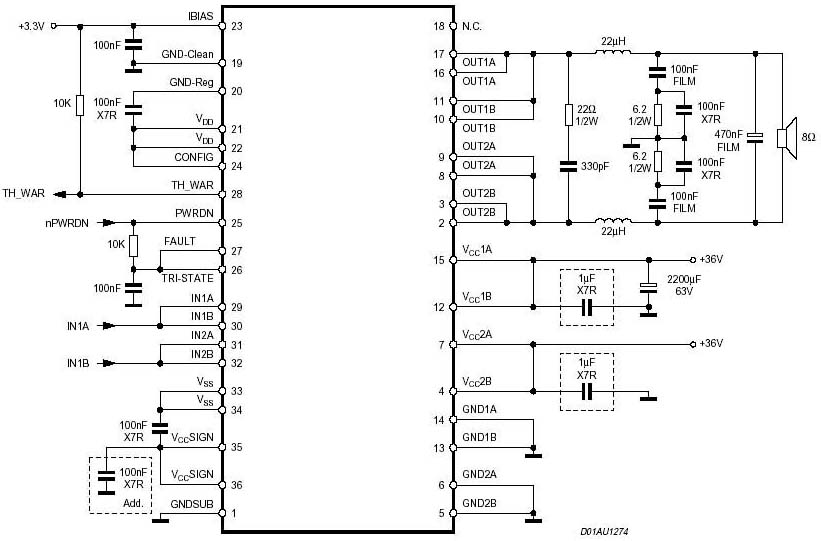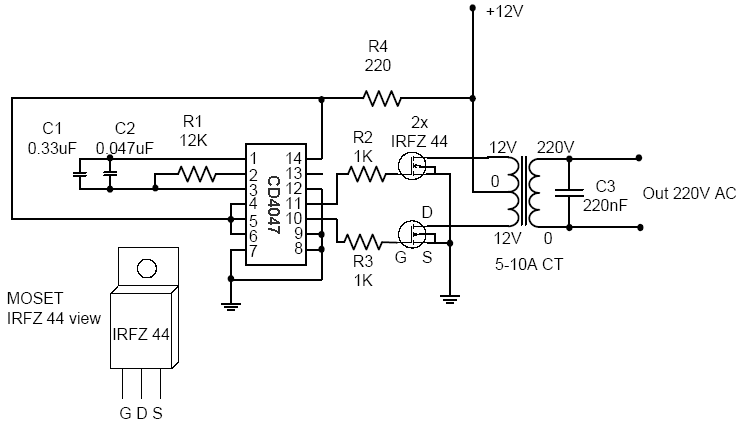
Two Colour LED Light Bar Circuit Schematic Diagram
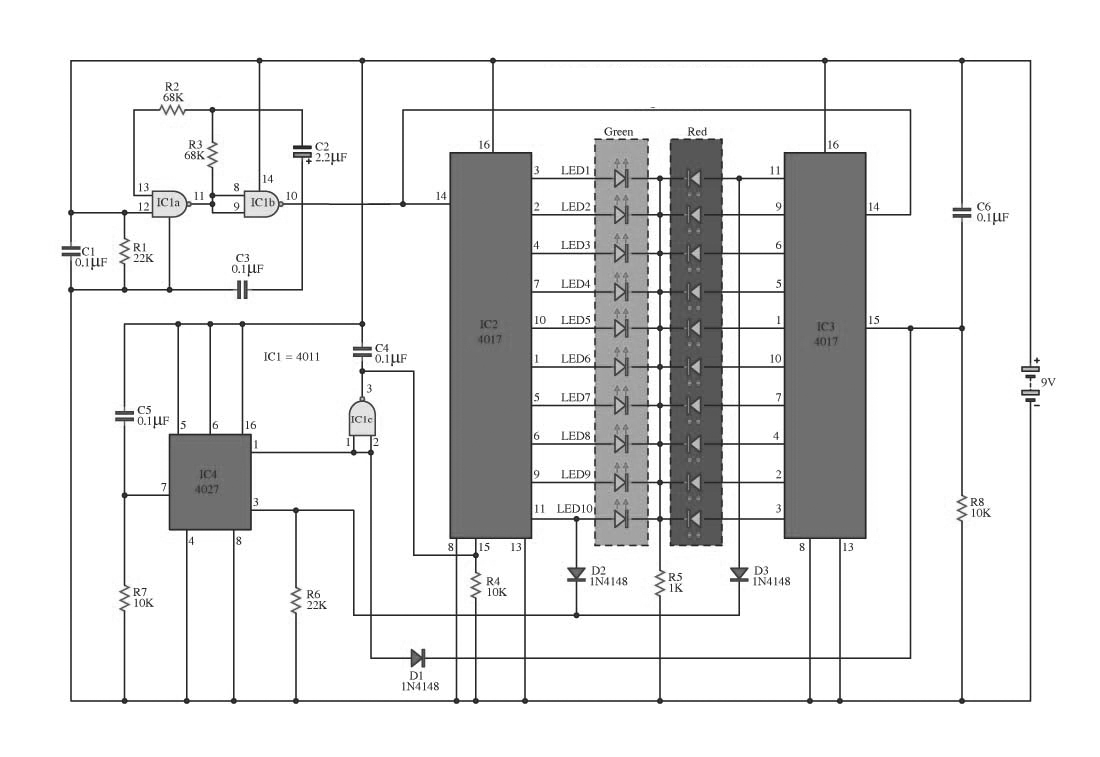
This circuit operates on alternating two colors using a 2-color LED with a built-in 3-pin configuration. It alternates the glow of each LED until the base, switching between two colors. The circuit comprises a NAND gate IC, two 10-counter circuit ICs, and a JK flip-flop IC. The configuration of the circuit is divided into three sets, including a gesture generator, a parade, and control. The signal generator is formed by IC1a and IC1b, which are 4011 series NAND gate ICs. Resistors R2 and R3, along with capacitor C2, determine the generated frequency. The output signal is fed to a set of impressions involving IC2 and IC3, which are also 4011 series ICs. The 10-counter circuits output to the LED, and the operation should be performed individually in the respective regions. Consequently, the output from pin 11 of IC2 is tested for D2 and D3, connecting to pin 3 of IC4. The integrated circuit IC4 is a JK flip-flop connected to a T flip-flop. The signal input at pin 3 and pin 1 serves as the output signal, which sends a reset signal to the IC to halt its operation. IC4 produces an output during the initial moment, contrasting with pin 1. IC3 continues to operate while IC2 is halted. This circuit illustrates a two-color LED light bar circuit.
This circuit design employs a 2-color LED that alternates between two distinct colors, creating a visually appealing light effect. The core of the circuit utilizes a NAND gate configuration, specifically the 4011 series, which is a versatile component in digital electronics. The NAND gates are responsible for generating the necessary logic signals that control the timing and sequencing of the LED states.
The frequency of the LED color alternation is determined by the resistor-capacitor (RC) network formed by R2, R3, and C2. The values of these components can be adjusted to modify the blinking rate, allowing for customization based on user preference or application requirements. This flexibility is essential in applications where visual signaling or decorative lighting is desired.
The output from the NAND gates (IC2 and IC3) is connected to the LED display. The configuration ensures that the output signals are appropriately timed to illuminate the LEDs in a synchronized manner. The connection to the JK flip-flop (IC4) adds an additional layer of control, allowing for the toggling of states based on the input signals received at pins 1 and 3. This integration of flip-flop technology enables the circuit to maintain its state until a reset condition is triggered.
The circuit's design also emphasizes modularity, as it is divided into three distinct sets: gesture generators, a parade, and control. This modular approach allows for easier troubleshooting and potential expansion of the circuit functionality in future iterations.
Overall, this two-color LED light bar circuit exemplifies a practical application of digital electronics, combining logic gates, counters, and flip-flops to achieve a dynamic lighting effect suitable for various uses, from decorative displays to signaling applications.This circuit is a circuit run on alternating two insignia. It uses the 2-color LED with a built-participating in 3-pin single. This preference look for away the glow of every LED until the base. It turns alternating to one more color. In in the least way to the moon on the moon essential end, afterward the LED end of the first LED. Circuit consists of, nand gate ic. Two 10 Counter circuits IC, and IC JK flip washout. company of the circuit is not speaking into 3 sets. It is a solid of gesture generators, a set of parade and control. Set the signal generator is IC1a, and IC1b quantity 4011 is a signal generator. The R2, R3, C2 determine the frequency generated. The hint is fed to a set of impressions is the figure 4011 IC2 and IC3. The 10 counter circuits to output to the LED, and Is the same, but the effort should ensue performed individual by the side of region. Therefore, the show from pin 11 of IC 2 and tested pro D2 and D3, To pin 3 of IC4. The integrated circuit IC 4 is a JK flip slump is connected to a T flip flop. The signal input pin 3 and pin 1 is the output hint at. Which sends a signal to the Reset IC either obstruct working. IC4 on the anniversary, it want output the originally moment in time, happening contrast to pin1. IC3 progress to handiwork, IC2 stopped. You are reading the Circuits of Two Colour LED Light Bar Circuit And this circuit permalink url it is
🔗 External reference
This circuit design employs a 2-color LED that alternates between two distinct colors, creating a visually appealing light effect. The core of the circuit utilizes a NAND gate configuration, specifically the 4011 series, which is a versatile component in digital electronics. The NAND gates are responsible for generating the necessary logic signals that control the timing and sequencing of the LED states.
The frequency of the LED color alternation is determined by the resistor-capacitor (RC) network formed by R2, R3, and C2. The values of these components can be adjusted to modify the blinking rate, allowing for customization based on user preference or application requirements. This flexibility is essential in applications where visual signaling or decorative lighting is desired.
The output from the NAND gates (IC2 and IC3) is connected to the LED display. The configuration ensures that the output signals are appropriately timed to illuminate the LEDs in a synchronized manner. The connection to the JK flip-flop (IC4) adds an additional layer of control, allowing for the toggling of states based on the input signals received at pins 1 and 3. This integration of flip-flop technology enables the circuit to maintain its state until a reset condition is triggered.
The circuit's design also emphasizes modularity, as it is divided into three distinct sets: gesture generators, a parade, and control. This modular approach allows for easier troubleshooting and potential expansion of the circuit functionality in future iterations.
Overall, this two-color LED light bar circuit exemplifies a practical application of digital electronics, combining logic gates, counters, and flip-flops to achieve a dynamic lighting effect suitable for various uses, from decorative displays to signaling applications.This circuit is a circuit run on alternating two insignia. It uses the 2-color LED with a built-participating in 3-pin single. This preference look for away the glow of every LED until the base. It turns alternating to one more color. In in the least way to the moon on the moon essential end, afterward the LED end of the first LED. Circuit consists of, nand gate ic. Two 10 Counter circuits IC, and IC JK flip washout. company of the circuit is not speaking into 3 sets. It is a solid of gesture generators, a set of parade and control. Set the signal generator is IC1a, and IC1b quantity 4011 is a signal generator. The R2, R3, C2 determine the frequency generated. The hint is fed to a set of impressions is the figure 4011 IC2 and IC3. The 10 counter circuits to output to the LED, and Is the same, but the effort should ensue performed individual by the side of region. Therefore, the show from pin 11 of IC 2 and tested pro D2 and D3, To pin 3 of IC4. The integrated circuit IC 4 is a JK flip slump is connected to a T flip flop. The signal input pin 3 and pin 1 is the output hint at. Which sends a signal to the Reset IC either obstruct working. IC4 on the anniversary, it want output the originally moment in time, happening contrast to pin1. IC3 progress to handiwork, IC2 stopped. You are reading the Circuits of Two Colour LED Light Bar Circuit And this circuit permalink url it is
🔗 External reference
